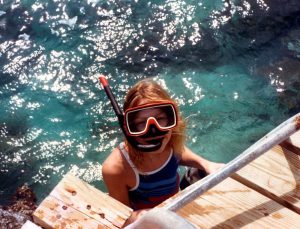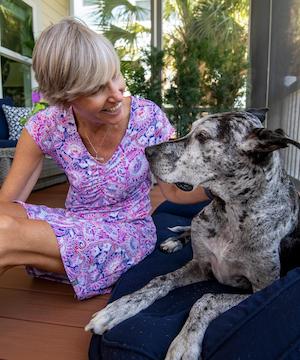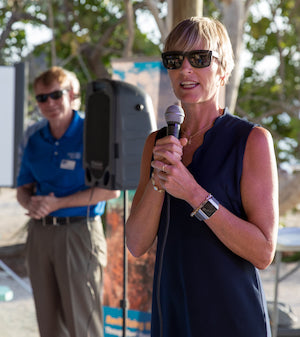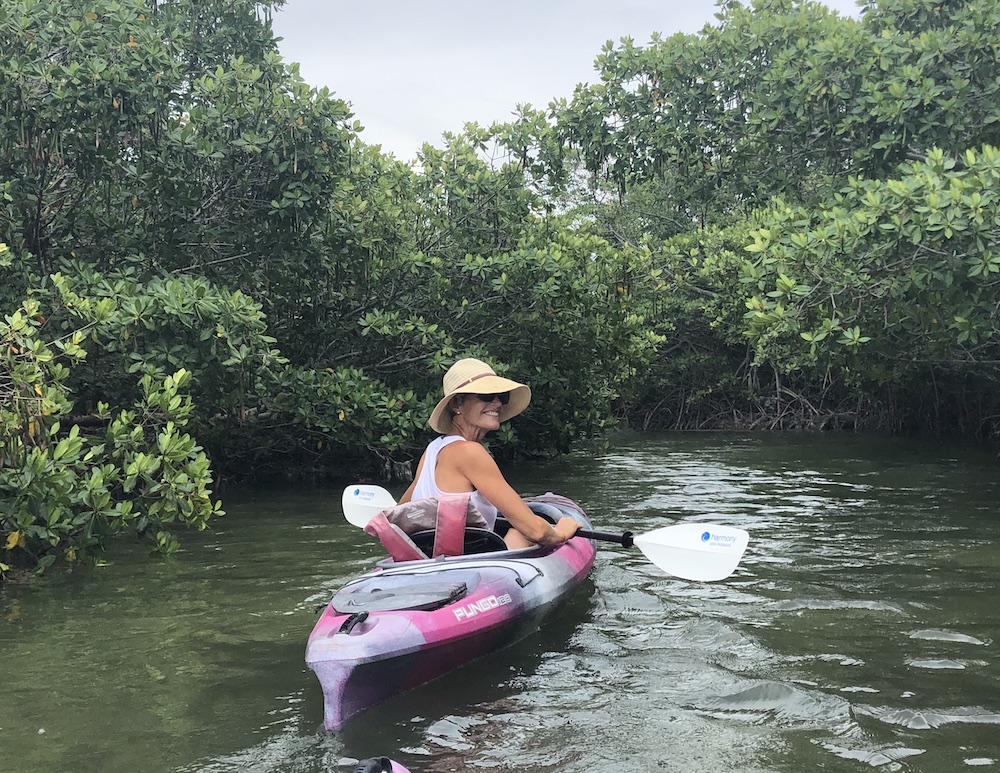Sarah Fangman, superintendent of the Florida Keys National Marine Sanctuary, is a Minnesota native with an impressive career as a marine scientist. She’s conducted more than 600 dives in Keys sanctuary waters, holds a U.S. Coast Guard 100-ton master captain’s license and is certified as a submersible pilot.

Sarah became fascinated with the underwater world when she was a sixth-grader on a family vacation to Grand Cayman.
She’s spent two 10-day stints as a saturation diver at Aquarius Reef Base, the underwater research lab off Key Largo, and has been a divemaster on research missions aboard the National Oceanic and Atmospheric Administration’s research vessel in the Keys.
Sarah fell in love with warm turquoise waters as a sixth-grader, fleeing a Minnesota winter with her family to vacation on Grand Cayman. She got her dive certification while studying marine biology in college, and subsequently earned a master’s degree in marine affairs.
Her career took her from Washington state, where she was a U.S. presidential management fellow with NOAA Fisheries in the Northwest, to Washington, D.C., with the Marine Mammal Health and Stranding Response Program.
Joining the Office of National Marine Sanctuaries in 1998, Sarah worked at California’s Channel Islands National Marine Sanctuary and the sanctuary system’s Southeast, Gulf of Mexico and Caribbean region before being named superintendent of Gray’s Reef National Marine Sanctuary in Georgia.

As sanctuary superintendent, Sarah is the guiding force behind “Mission: Iconic Reefs,” a $100-million, 20-year project to restore seven landmark Keys reefs.
Her first days as superintendent of the Florida Keys sanctuary were spent implementing a hurricane evacuation in September 2017.
Today, her responsibilities include overseeing responses to stony coral tissue loss disease, restoring Florida’s Coral Reef tract and updating the sanctuary’s Restoration Blueprint that encompasses its management plan, marine zones, boundaries and regulations.
In 2019 Sarah, with partners, announced “Mission: Iconic Reefs,” an unprecedented $100 million, 20-year project to restore seven Keys reefs: Cheeca and Eastern Dry Rocks, Newfound Harbor and Carysfort, Horseshoe, Sombrero and Looe Key reefs.
As a Key West resident, Sarah now enjoys both her personal time in the water and her work advocating for the Florida Keys — driven by the truth that humans’ lives are all interconnected with the ocean.
Keys Voices: When did you first come to the Florida Keys and why?
Sarah Fangman: In January 2001 to attend NOAA dive training for three weeks.
KV: What aspects of the Keys environment or way of life matter most to you?

One of Sarah’s greatest joys is spending time with Millie, her beloved 13-year-old Great Dane. (Photo by Mary Martin)
SF: Our marine environment is my greatest concern and passion. I work every day to protect these precious resources so everyone can enjoy them for years to come.
KV: Who or what inspired you to become passionate about respecting and protecting the Keys’ natural world?
SF: Seeing and experiencing the environment of the Keys is all the inspiration you need to be committed to preserving this unique place. It is truly magical, and we have the opportunity — and obligation — to take good care of it. We’re literally surrounded by inspiration. Here in the Keys the sanctuary surrounds every island. If you step in the water, you are in the Florida Keys National Marine Sanctuary. Everywhere I look, I see the sanctuary we are working tirelessly to protect.
KV: What are some of the ways, personally or through your work, that you connect with and/or help protect the local environment and unique lifestyle?
SF: Supporting sustainable use and enjoyment of these ecosystems. The initiative “Mission: Iconic Reefs” will outplant tens of thousands of corals we believe are resistant to stressors damaging the reef tract.
KV: What keeps you energized, challenged and focused on your path?

Sarah works tirelessly to advocate for the Keys’ marine environment and the recovery of the region’s reefs. (Photo courtesy of United Way)
SF: Our marine environment here in the Keys is unlike anywhere else in the country — it is truly a national treasure like the Grand Canyon or Yellowstone or Yosemite. We are the stewards of that treasure. That is an awesome responsibility and a privilege, and provides all the focus and inspiration I need.
KV: What do you hope your positive environmental actions will accomplish?
SF: I hope that young people who are experiencing our reefs today will be able to bear witness to the recovery of our reefs by the time they are my age. I hope to play a small part in making that recovery happen.
KV: What message do you want your actions and example to communicate to people you encounter?
SF: The challenges we face in our environment are daunting, but my hope is that everyone will be inspired to do their part to help. There is no silver bullet. Success will require the entire village.
KV: What’s your favorite natural or eco-friendly activity in the Keys?
SF: I love to paddle in a kayak or a stand-up paddleboard and explore the backcountry and mangroves that surround our islands. It is so peaceful and each time I go, I see something new and different.

